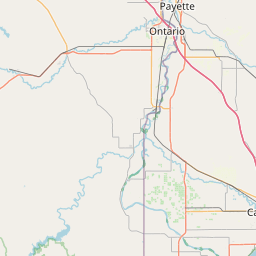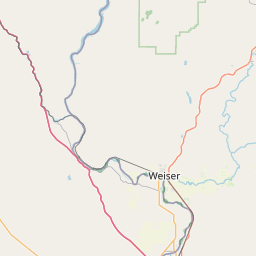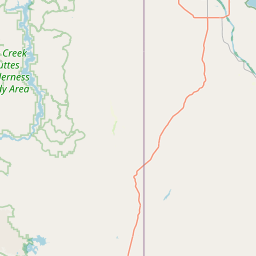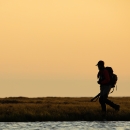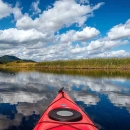To prepare for the lake opener of Lake Lowell at Deer Flat National Wildlife Refuge, we want to share some pointers:
- The lake is open from April 15 – September 30 for motorized and non-motorized boating, fishing, swimming, and wildlife watching. If you bring a pet, it must be leashed.
- To protect wildlife, please obey the no-wake zones on the southeast end of the lake, through the narrows and in a 200-yard zone on the south side of the lake.
- October 1 – April 14, human-powered boats are allowed, but only 200 yards in front of the Upper and Lower Dams. Boat ramps are closed.
Reminder that we share the lake with wildlife and to please be respectful of your surroundings.
(Español) Para prepararnos para la apertura del Lake Lowell en el Refugio Nacional de Vida Silvestre Deer Flat, queremos compartir algunas recomendaciones:
- El lago estará abierto del 15 abril al 30 septiembre para paseos en bote motorizados y no motorizados, pesca, natación y observación de vida silvestre. Si trae una mascota, debe llevar correa.
- Para proteger la vida silvestre, respete las zonas de velocidad reducida, en “Los Estrechos” (Narrows) y en una zona de 200 yardas en el lado sur.
- Del 1 octubre al 14 abril, se pueden usar botes de tracción humana y flotadores, pero solo en las áreas de 200 yardas frente a las Represas Superior e Inferior (Upper and Lower Dams).
- Le recordamos que compartimos el lago con la vida silvestre y que, por favor, sea respetuoso con su entorno.
Visit Us
National wildlife refuges offer us all a chance to unplug from the stresses of daily life and reconnect with our natural surroundings. With a nearly 9,000-acre lake and more than 10 miles of trails, refuge visitors can easily find an adventure for their experience level. As you visit this wildlife home, be sure to slow down to watch wildlife and look for signs of wildlife like tracks, scat, and nests. Whether you come to fish, boat or swim in Lake Lowell or to hike, bird, hunt, picnic or just watch a sunset in the nearby uplands, there are many opportunities to connect with nature during your visit.
Location and Contact Information
- Deer Flat National Wildlife RefugeView Details13751 Upper Embankment Road Nampa, ID 83686-8046
About Us
Deer Flat National Wildlife Refuge is an urban oasis where nature connects people, communities and wildlife. We welcome diverse communities to develop meaningful connections with nature and each other through educational and recreational experiences. The Lake Lowell Unit protects nesting colonies of western and Clark’s grebes and spectacular migratory and wintering concentrations of mallards and Canada geese. The Snake River Islands Unit provides important nesting habitat for ducks, geese, songbirds, herons, egrets and more.
What We Do
The staff and partners at Deer Flat National Wildlife Refuge work year-round to maintain and enhance refuge lands and programs for both wildlife and the community. Our conservation toolbox includes controlling invasive species invasive species
An invasive species is any plant or animal that has spread or been introduced into a new area where they are, or could, cause harm to the environment, economy, or human, animal, or plant health. Their unwelcome presence can destroy ecosystems and cost millions of dollars.
Learn more about invasive species , restoring degraded habitat, creating new habitat, providing artificial nesting habitat, and seasonally or permanently closing some lands to provide undisturbed areas for wildlife.
Our Organization
Our Species
The lake, wetlands, riparian riparian
Definition of riparian habitat or riparian areas.
Learn more about riparian forests, and sagebrush sagebrush
The western United States’ sagebrush country encompasses over 175 million acres of public and private lands. The sagebrush landscape provides many benefits to our rural economies and communities, and it serves as crucial habitat for a diversity of wildlife, including the iconic greater sage-grouse and over 350 other species.
Learn more about sagebrush uplands protected by the refuge provide homes to resident and migratory wildlife and native plants. Just a short drive from the busy Treasure Valley, you can spot bald eagles and other raptors, spectacular concentrations of migrating and wintering waterfowl and western and Clark’s grebes at one of the three largest nesting colonies in Idaho.
Get Involved
Whether you want to further conservation, learn more about nature or share your love of the outdoors, you’ve come to the right place. National wildlife refuges provide many opportunities for you to help your community by doing what you love. National wildlife refuges partner with volunteers, youth groups, landowners, neighbors and residents of urban and coastal communities to make a lasting difference. Find out how you can help make American lands healthier and communities stronger while doing something personally satisfying.






